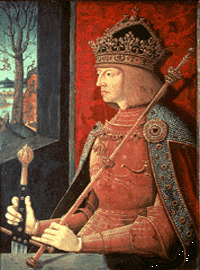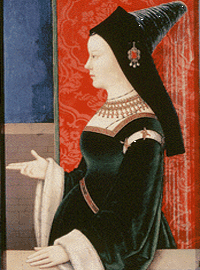Diamond Love and Betrothal Rings
Diamond has served many forms of jewelry beautifully, but the smallest form is the one that catches our interest the most -- the diamond ring given in token of love and marriage. The real history of this tradition transcends the perception of its creation as marketing hyperbole. The modern solitaire is just the most new step on a long road from the past.
Rings date back a number of millennia, but ones given as tokens of love are first noted by the comic Roman poet Plautus in the 2nd century BCE. Wedding rings are known because of inner inscriptions recording the marriage contracts signed in the presence of the Emperor's image. The custom was continued and Christianized by the 4th century, established by St. Augustine's imploring priests to permit weddings without the exchange of rings. Byzantine wedding rings are thick gold bands with round or oval bezels depict the couple face to face, or receiving Christ's blessing on their union.


The meaning of the wedding ring was clearly defined in the 7th century by the bishop and chronicler Isidore of Seville (c. 560-636): "It was given by the spouse to the espoused whether for a sign of shared fidelity or still more to join their hearts to this pledge and that therefore the ring is placed on the fourth finger because a certain vein is said to flow from thence to the heart." The portraits beyond present Hapsburg Emperor Maximilian I (by Bernard Strigel, ca. 1500) and Mary, his wife, Duchess of Burgundy and daughter of Charles the Bold (ascribed to Niclas Reiser, ca. 1500). The union in 1477 was celebrated by the exchange of a diamond betrothal ring, which would have been an early example and maybe the first royal one.
<< Back | Next >>